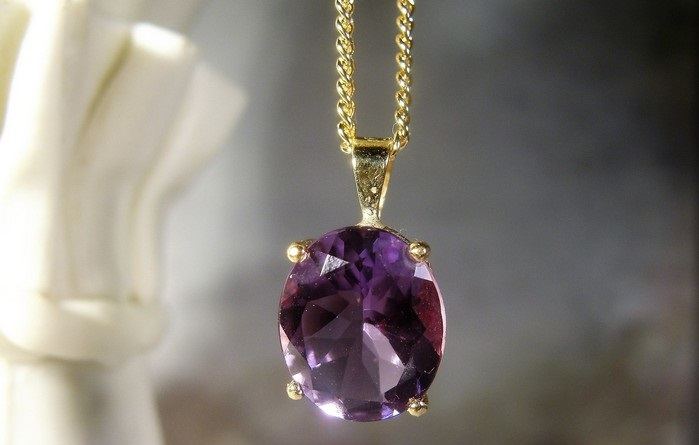Amethyst, with its mesmerizing purple hues, has captivated humanity for centuries. As one of the most popular gemstones in the quartz family, it has been cherished for its beauty and perceived metaphysical properties. However, despite its allure, amethyst, like any other gemstone, possesses its own set of sensitivities. Understanding what amethyst is sensitive to is crucial for its care, preservation, and appreciation.
Composition and Formation of Amethyst
Before delving into the sensitivities of amethyst, it is imperative to comprehend its composition and formation. Amethyst is a variety of quartz, a mineral composed of silicon dioxide (SiO2). Its distinctive purple coloration is attributed to the presence of iron impurities within the quartz crystal lattice, along with irradiation and trace elements.
Amethyst typically forms in geodes or cavities within igneous rocks, such as granite. The process of amethyst formation involves the precipitation of silicon dioxide from hydrothermal solutions, followed by the introduction of trace elements, particularly iron, which imparts its characteristic purple hue.
Sensitivities of Amethyst
While amethyst is revered for its durability and hardness (7 on the Mohs scale), it is not impervious to external factors that can affect its appearance and integrity. Understanding the sensitivities of amethyst is essential for its care and preservation. The following are key factors that amethyst is sensitive to:
1. Sunlight and UV Radiation
Amethyst is sensitive to prolonged exposure to sunlight and ultraviolet (UV) radiation. Like many colored gemstones, prolonged exposure to sunlight can cause fading or discoloration of amethyst. This phenomenon is particularly evident in varieties of amethyst with lighter shades of purple.
UV radiation can also have a bleaching effect on amethyst, altering its color over time. To prevent such color changes, it is advisable to store amethyst jewelry or specimens away from direct sunlight and UV sources when not in use. Additionally, using UV-blocking coatings or storing amethyst in protective cases can help mitigate the effects of UV radiation.
2. Heat
Excessive heat can adversely affect the color and clarity of amethyst. While amethyst is generally stable at normal temperatures encountered in everyday wear, exposure to high temperatures can cause thermal shock, leading to fracturing or even shattering of the gemstone.
Furthermore, heat can alter the internal structure of amethyst, affecting its color and vibrancy. It is essential to avoid exposing amethyst jewelry to sudden temperature changes, such as placing it near heating sources or wearing it in hot environments like saunas.
3. Chemicals and Abrasive Substances
Amethyst is sensitive to harsh chemicals and abrasive substances that can damage its surface and luster. Household chemicals, such as bleach, ammonia, and chlorine, can corrode or etch the surface of amethyst, dulling its brilliance over time.
Similarly, abrasive substances like sand or grit can scratch the surface of amethyst, diminishing its clarity and polish. It is crucial to avoid exposing amethyst jewelry to chemicals or abrasive materials and to clean it gently using mild soap and water or specialized jewelry cleaning solutions.
4. Impact and Mechanical Stress
Despite its relative hardness, amethyst is susceptible to damage from impact and mechanical stress. Accidental knocks or blows can cause chipping, fracturing, or even complete breakage of amethyst gemstones.
To minimize the risk of damage, it is advisable to handle amethyst jewelry with care and avoid wearing it during activities that may subject it to mechanical stress, such as sports or heavy manual labor. Additionally, storing amethyst jewelry separately from other gemstones can prevent accidental collisions that may cause damage.
5. Extreme pH Environments
Amethyst is sensitive to extreme pH environments, particularly acidic or alkaline solutions. Exposure to acidic substances, such as vinegar or lemon juice, can etch the surface of amethyst, while exposure to alkaline substances may cause discoloration or degradation of the gemstone.
It is essential to avoid exposing amethyst jewelry to substances with extreme pH levels and to clean it using gentle, neutral-pH cleaning solutions. Additionally, rinsing amethyst thoroughly after cleaning can help remove any residual traces of acidic or alkaline substances.
6. Lighter Shades of Amethyst
Lighter shades of amethyst are more sensitive to external factors than darker varieties. Pale or pastel-colored amethyst may exhibit greater susceptibility to fading, discoloration, and changes in clarity due to environmental factors such as sunlight, heat, and chemicals.
To preserve the beauty of lighter shades of amethyst, it is advisable to store them away from direct sunlight and UV sources, avoid exposure to high temperatures, and handle them with care to prevent damage.
7. Synthetic Treatments and Enhancements
Some amethyst gemstones undergo synthetic treatments and enhancements to improve their color or clarity. These treatments may include irradiation, heating, or coating processes to alter the appearance of the gemstone.
While treated amethyst may exhibit enhanced color and visual appeal, it is essential to understand that such treatments can also affect the gemstone’s sensitivity to external factors. For example, irradiated or coated amethyst may be more prone to color changes when exposed to sunlight or chemicals.
Conclusion
Amethyst, with its enchanting beauty and metaphysical allure, is a gemstone that has fascinated humanity for centuries. Understanding the sensitivities of amethyst is crucial for its care, preservation, and appreciation. From sunlight and UV radiation to heat, chemicals, and mechanical stress, amethyst is sensitive to a variety of external factors that can affect its appearance and integrity.
By taking appropriate precautions and handling amethyst with care, enthusiasts can ensure that this precious gemstone retains its luster and beauty for generations to come. Whether adorning jewelry pieces or displayed as specimens, amethyst continues to captivate admirers worldwide with its timeless charm and elegance.


